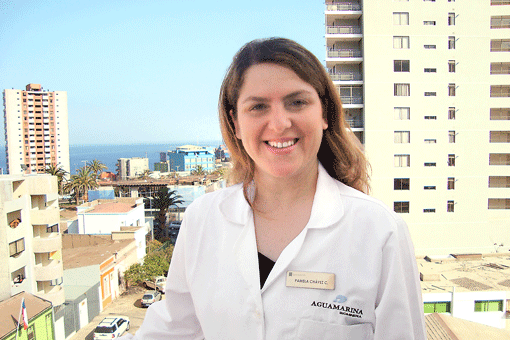The rescue of the 33 miners trapped for more than two months deep beneath the Chilean earth drew unprecedented media attention to Chile. The near-flawless operation demonstrated the mining industry’s technological prowess, while the collapse itself shed light on the antiquated extraction methods that jeopardizes miners’ lives and the environment.
Enter Pamela Chávez Crooker, a 42-year-old marine biologist and microbiological engineer. As cofounder and director of research and development (R&D) for Aguamarina S.A.—a leading Chile-based biotechnology company—Chávez is applying the latest science in microbiology to the age-old process of mineral extraction to improve mine safety and address the industry’s environmental pitfalls.
A proud native of Antofagasta, a port city of about 300,000 people in northern Chile, Chávez attributes her passion for marine science to a childhood spent in one of the driest regions on earth. “If you’re not looking up at the sky,” she says, “you’re looking out toward the ocean.” The Chilean mining industry’s need for new technology motivated Chávez into a search for global ideas. After studying at the Universidad de Antofagasta, she pursued graduate work at Kyoto University and the University of Hawaii at Manoa.
Chávez finished her studies in 2004, at a time when Chile experienced a new influx of foreign investment. Returning to her hometown, she partnered with investor Juan Manuel Aguirre to create Aguamarina, assembling a team of 18 chemical engineers.
Aguamarina specializes in R&D in two chemical processes that are key to mineral extraction. The first is bioleaching, or the process of using the Bacillus bacteria to extract low concentrations of precious metals from ore. Mining companies tend to disregard these ores due to the high cost and low returns of the standard extraction method, known as leaching. In contrast, bioleaching can remove the minerals cheaply, and instead of requiring miners to burrow underground to retrieve the ore, it extracts metals inside the mine itself, diminishing safety risks, environmental damage and costs. Although the process occurs in nature, mining companies have only recently begun to manually induce bioleaching on a large enough scale for it to become efficient, profitable and sustainable.
The other process Aguamarina researches is biocorrosion, which disintegrates metals through exposure to sulfate-reducing bacteria. Aguamarina was one of the first companies in the world to identify the effects of leakage from wells and piping in underground mines due to biocorrosion. It was also, Chávez points out with pride, one of the first to offer solutions. Aguamarina studies samples of microorganisms from clients’ mines to determine which bacteria should be used in the extraction process to minimize biocorrosion. The company tailors its solutions to the conditions inside each mine to make more of the extracted metal usable. Using the appropriate bacteria can also slow the deterioration of mining infrastructure like wells and pipes, reducing the necessity for risky repair missions executed thousands of feet underground by teams of miners.
Working in an industry crucial to Chile’s economy, Aguamarina has not surprisingly attracted the support of the Chilean government. Programs like Corporación de Fomento de la Producción de Chile (CORFO) and ProChile—aimed at increasing investment and innovation in Chile—have helped the company become a national pioneer.
With a growing ability to market its technology and services on a regional level and a solid national client base, Aguamarina has also begun expanding its operations to mines in the U.S., Brazil and Peru.





